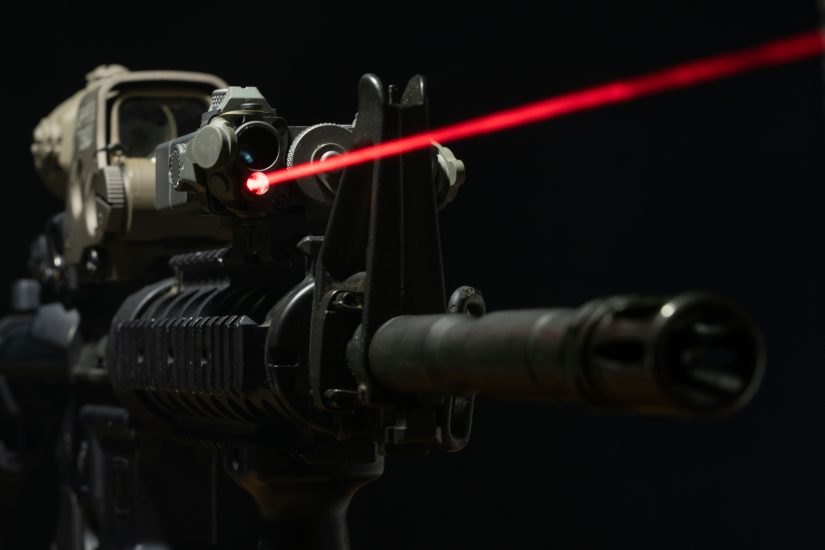The US Army’s W6J1 RCCTO BELVOIR office is seeking industry white paper responses to its requirement for an enduring directed energy weapon requirement. Deadline for responses is August 7.
“Laser weapon systems will be critical enablers within the Army’s formation as the lethality, interoperability, and sustainability of these systems advance over the next decade,” says the tender document. “The ability to produce laser weapon systems rapidly and repeatedly at scale requires industry partners to work together. RCCTO’s objective is to collaborate with industry to expedite the development and field testing of a producible and sustainable laser weapon system. This system will be designed to meet the Army’s C-UAS Battalion force protection requirements by seamlessly integrating into the Army’s Air and Missile Defense (AMD) architecture, specifically to deliver lethal effects against Groups 1-3 Unmanned Aircraft Systems (UAS).
“Following the RCCTO Other Transaction Authority (OTA) prototype award, under Title 10 USC 4022 in early FY25, selected vendors’ laser weapon systems will undergo an expedited United States Government (USG) field test program to demonstrate that they are safe and suitable for operational use.
“RCCTO will select a prime contractor in FY26 for production following the successful completion of the development and demonstration effort. The program intends to transition to Program Executive Office Missiles and Space (PEO MS) for production and is considering using Middle Tier of Acquisition (MTA) Rapid Fielding to produce up to 20 laser weapon systems. These production units will maximize available hardware and software open-interface standards to maximize lethality, interoperability, sustainability, and producibility requirements.
“The rapid increase in the availability and sophistication of UAS represents a significant challenge to U.S. strategic objectives. Adversary capabilities are progressing exponentially, and the USG is challenged with increasing our ability to efficiently assess and mitigate nefarious UAS threats.
“The imminent emerging threat to U.S. Soldiers comes from Groups 1-3 UAS platforms that provide the enemy with intelligence, surveillance, and reconnaissance (ISR) and attack capabilities; either through delivery of submunitions or via one-way kamikaze attacks. These Group 1-3 UAS threat systems are well suited to conduct tactical and operational level missions, can be launched from forward operating positions without the use of conventional runways, and are difficult to detect and destroy due to their low-flying altitude and small size. To maintain overmatch on the battlefield, continued modernization through use of emerging technologies is required to increase detection, range, lethality, reliability, and survivability in Multi-domain Operations (MDO).
To aid in this fight, RCCTO is seeking High Energy Laser (HEL)-based weapon solutions from industry for integration into common Army AMD networks to demonstrate a capability to defeat Groups 1-3 UAS threats utilizing an engage-on-the-short-halt capable platform. The proposed HEL solution should include the USG defined Modular Open System Architecture (MOSA) weapon system design considerations, allowing greater flexibility for U.S. Soldiers to employ, operate, and maintain the system.
“The U.S. Army objective is to produce a HEL weapon system capable of fixed site defense (“palletized”) and/or integration onto an existing Army Platform, such as a Joint Light Tactical Vehicle (JLTV). White paper submissions shall include how you would approach designing, integrating, building, and delivering a HEL C-UAS weapon system in a cooperative manner with the government stakeholders. The USG will provide the Army’s Forward Area Air Defense Command and Control (FAAD C2) Interface Control Documents (ICD), Army owned platform interface specifications, such as JLTV, including onboard sensors and radios, the Integrated Recording Appliance (IRA) design reference ICD, and the Navy Joint Laser Deconfliction Safety System (JLDSS) as Government Furnished Information (GFI) upon contract award. The systems must be ready for a sensor and laser lethality characterization test in 1QFY25, a lab demo in 2QFY25, an integrated system field test in 3QFY25, and a Soldier Touch Point (STP) event in 1QFY26.”
For more information
https://sam.gov/opp/f01b5e2152e946f1887d09cd41f37ba0/view
(Image:Shutterstock)




